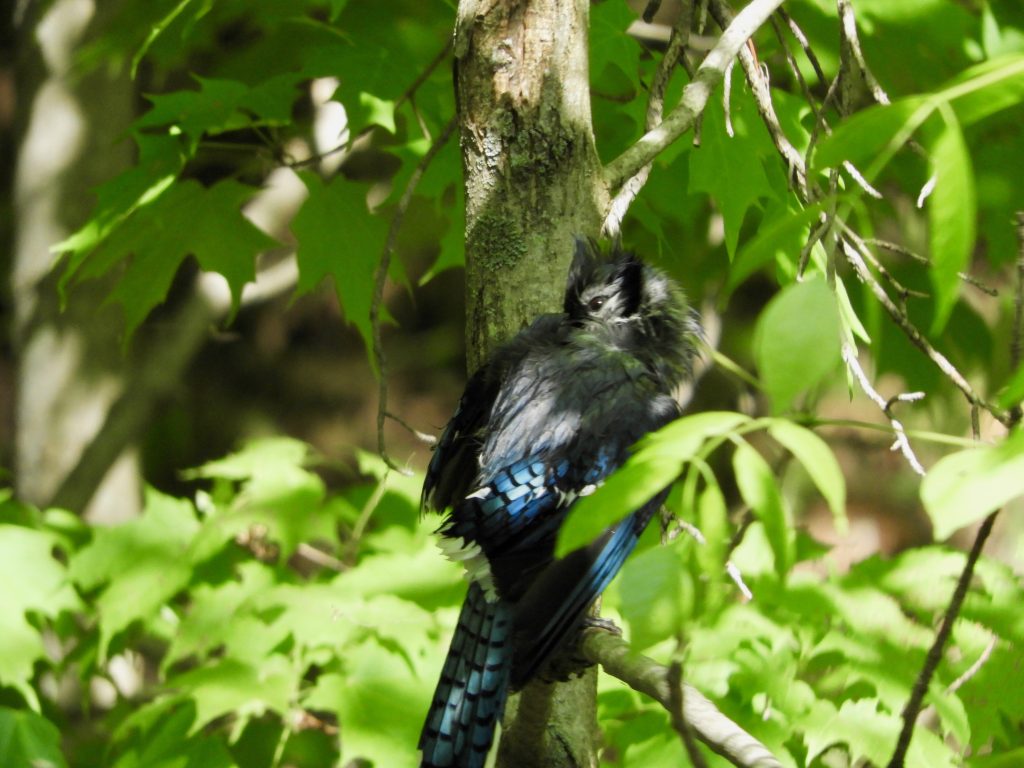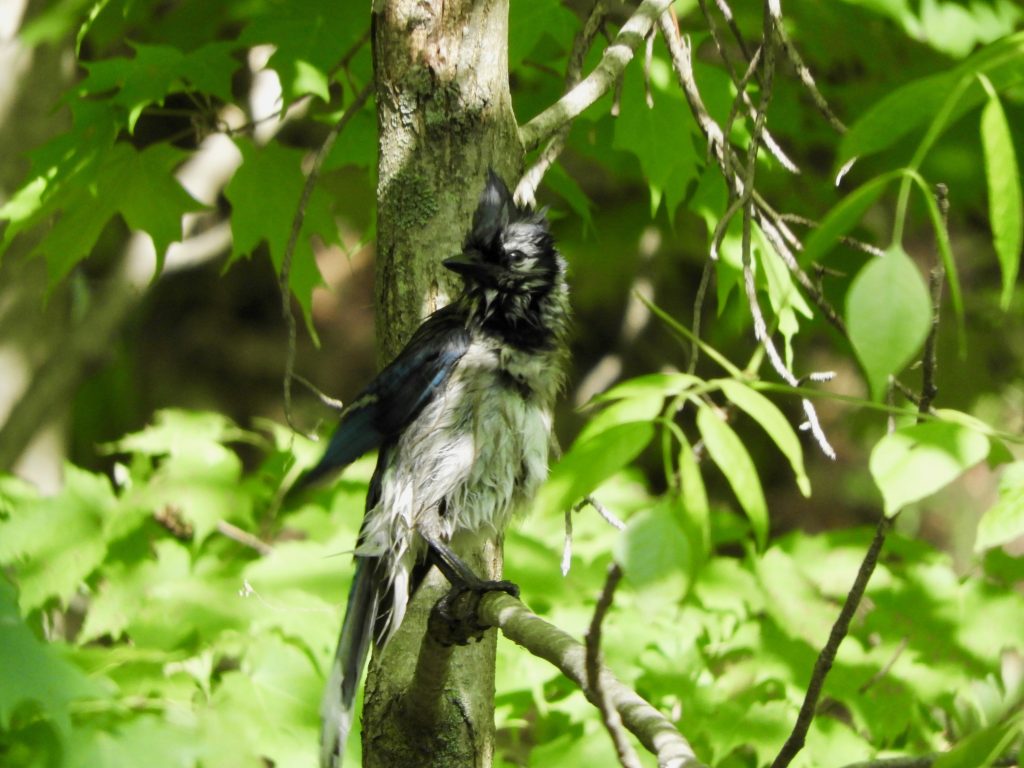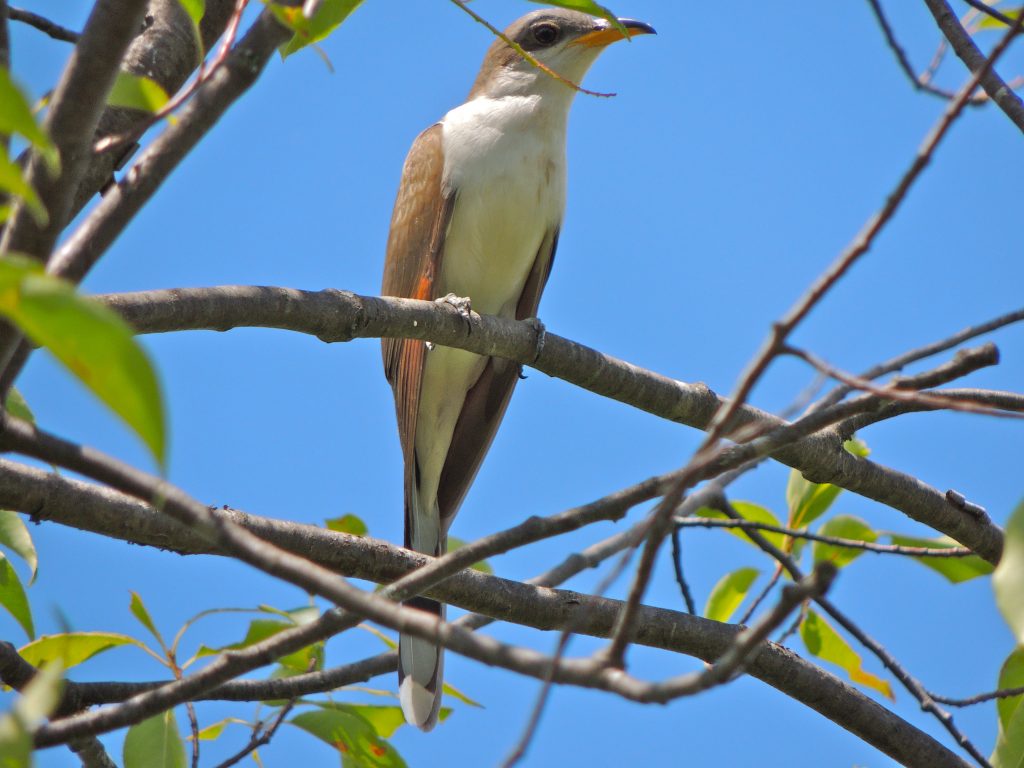
Pinetum, Royal Botanical Gardens, Hamilton ON. May 23rd..2021. With a transect commitment to fulfill, my companion and I met well before 7 a.m. to make the most of the near-dawn freshness and avoid the inevitable press of weekend hikers. You can count on the last half of May for good birding and it was everything we could have hoped for.
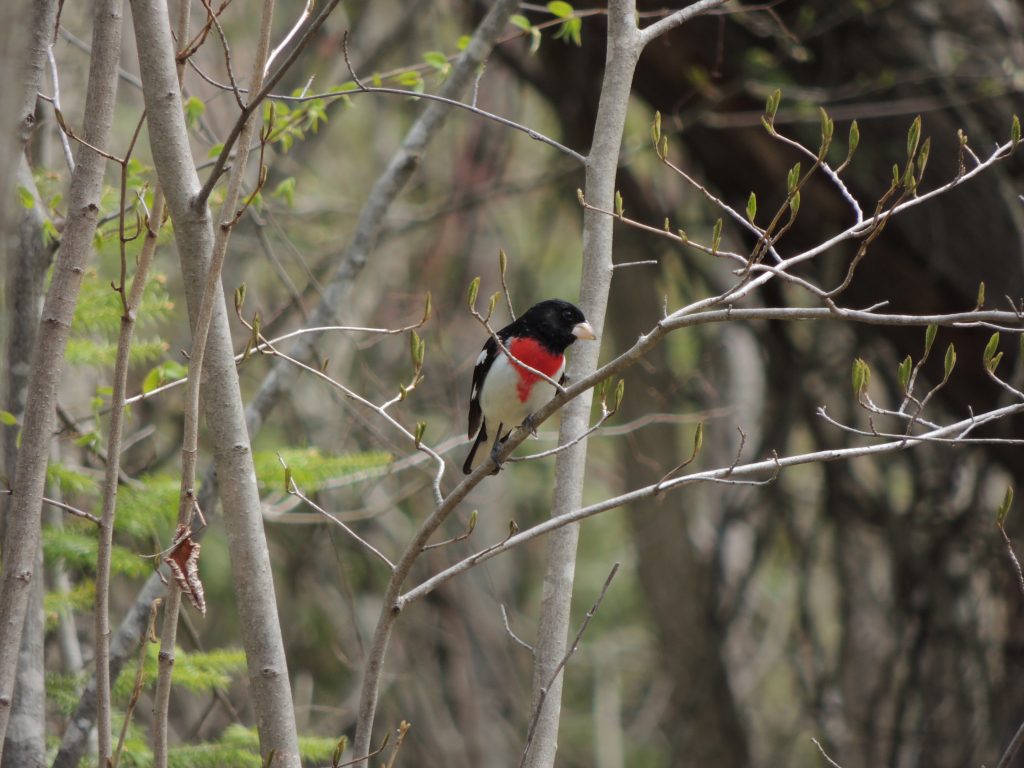
With most trees now in full leaf, we had to rely heavily on bird song to tell us who’s who and where; quite a challenge and close to impossible at times. The ringing songs of Baltimore Orioles were all around overlapping the flat and rather measured tones of Rose– Breasted Grosbeaks and newly arrived Scarlet Tanagers. Picking among all of those songs we knew there were many Great Crested Flycatchers, they are a late migrant so I suspect many of them had arrived overnight.
It seemed as though Red–eyed Vireos had consolidated control of the tree tops. Always keeping a decent distance between themselves, they sing endlessly: a rhythmic pattern delivered as they make their way up and down the canopy, rather like the Grand Old Duke’s ten-thousand men. Old familiars: robins, cardinals and jays added to the tangle of song, and through it all we picked up the faint sound of a Yellow–billed Cuckoo.
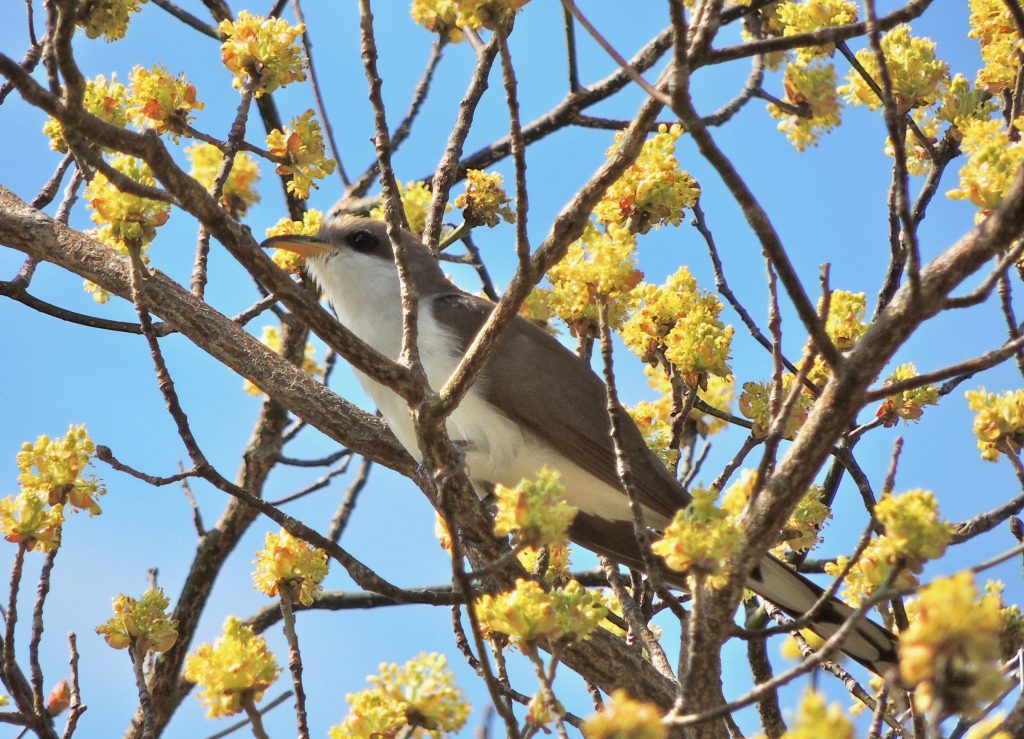
It always takes me a minute or two to sort out which of our two cuckoo species I am hearing: Yellow–billed or Black–billed. They look much alike and their songs, while quite different once you get the hang of them, are confusable. After little bit of research, we decided that we’d heard a Yellow–billed Cuckoo and in time we heard two or three more. They were (and always are) something of a thrill although not a huge surprise because they always show up about now.
The old-world Common Cuckoo (of cuckoo clock association) is well-known as a nest parasite. Our two, the Yellow-billed, and the Black-billed, are usually conscientious parents, building a nest and raising a brood, but both species are known to sometimes practice brood parasitism, although it is discretionary and science has yet to figure out what triggers the parasitic urge. Typical breeding is apparently correlated with an abundant local food supply and once started, the breeding cycle is extremely rapid, and requires only 17 days from egg-laying to fledging of young. Incredibly, almost explosive feather sheaths allow nestlings to become fully feathered within two hours.
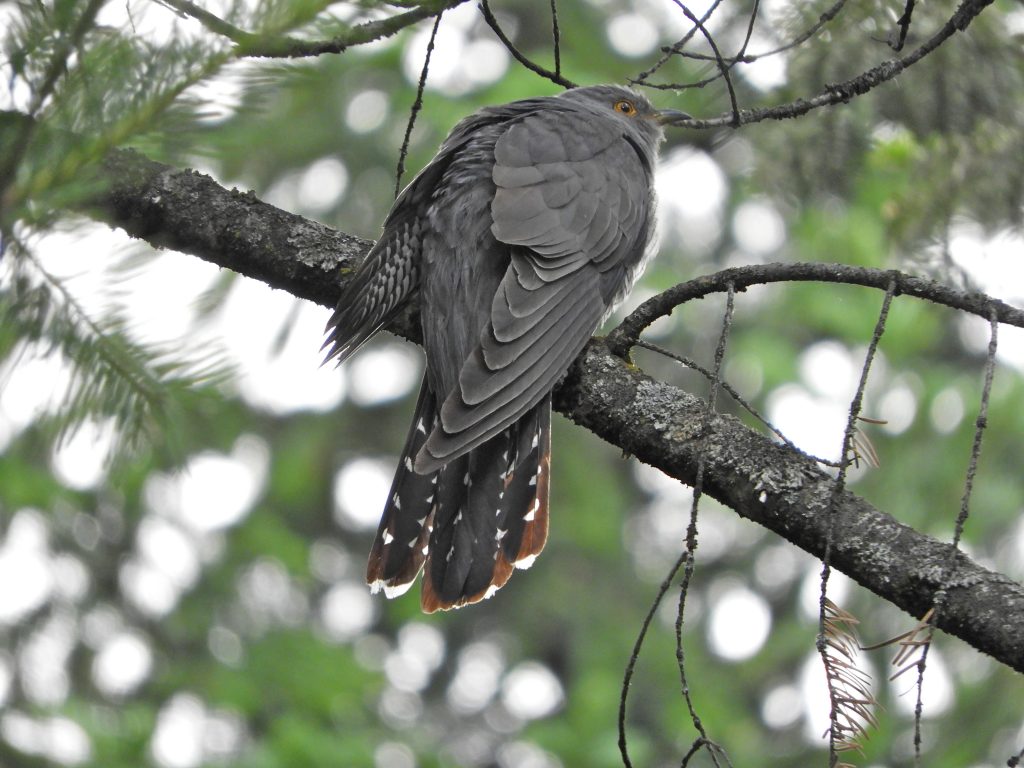
We didn’t see any of the today’s cuckoos; I’m quite content with just hearing them. It’s something of a personal toss up whether a heard-only bird counts for the day or whether a sighting is essential. Hearing is good, I have seen many and have enough photos to keep me going through the winter.
And speaking of photos, here are a couple of a Blue Jay we disturbed from his morning bath. It could have My Bird of the Day but not with Yellow-billed Cuckoos as competition.
